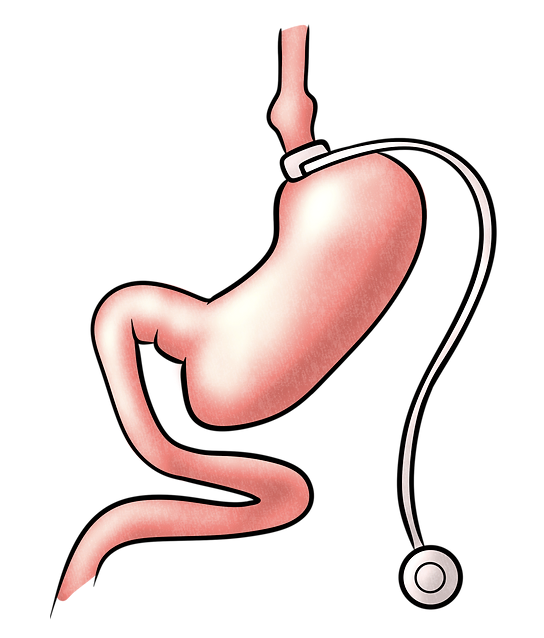Bariatric Surgery
What is Bariatric Surgery?
Bariatric surgery is a collective term for various surgical procedures performed on the stomach or intestines to promote weight loss. It’s primarily used as a last resort for individuals who have tried and failed to lose weight through diet and exercise and are suffering from health issues related to obesity.
The Importance of Bariatric Surgery
Obesity is a worldwide health concern. Besides the stigma and psychological implications, it is associated with serious health issues like heart disease, diabetes, and sleep apnea. Bariatric surgery is an important tool in managing and treating obesity, providing a significant long-term weight-loss solution for individuals struggling with severe obesity.

Types of Bariatric Surgery
There are several types of bariatric surgery, each designed with specific goals and benefits. Let’s dive in to understand each one better.
Gastric Bypass
This procedure involves creating a small stomach pouch and rerouting the small intestine to this pouch, limiting food consumption and calorie absorption.
Gastric Sleeve
Also known as sleeve gastrectomy, this operation involves removing a large portion of the stomach, leaving a smaller, sleeve-like stomach that limits food intake.
Adjustable Gastric Band
A band is placed around the upper part of the stomach, creating a small pouch that restricts the amount of food that can be eaten. The band’s tightness can be adjusted as needed.
Gastric Balloon
A deflated balloon is placed in the stomach and then inflated, creating a sense of fullness and limiting food consumption.
Gastric Botox
A non-surgical method involves injecting Botox into the stomach walls to reduce sensitivity to hunger-causing hormones, thereby reducing appetite and promoting weight-loss.
Types of Bariatric Surgery
There are several types of bariatric surgery, each designed with specific goals and benefits. Let’s dive in to understand each one better.
Gastric Bypass
This procedure involves creating a small stomach pouch and rerouting the small intestine to this pouch, limiting food consumption and calorie absorption.
Gastric Sleeve
Also known as sleeve gastrectomy, this operation involves removing a large portion of the stomach, leaving a smaller, sleeve-like stomach that limits food intake.
Adjustable Gastric Band
A band is placed around the upper part of the stomach, creating a small pouch that restricts the amount of food that can be eaten. The band’s tightness can be adjusted as needed.
Gastric Balloon
A deflated balloon is placed in the stomach and then inflated, creating a sense of fullness and limiting food consumption.
Gastric Botox
A non-surgical method involves injecting Botox into the stomach walls to reduce sensitivity to hunger-causing hormones, thereby reducing appetite and promoting weight loss.
Gastric Bypass Surgery
Gastric bypass, often known as Roux-en-Y gastric bypass, is a type of weight-loss surgery that involves creating a small pouch from the stomach and connecting the newly created pouch directly to the small intestine. Moreover, this procedure has been widely recognized for its results in substantial weight-loss and improvement in comorbid conditions.
Gastric Bypass Surgery
Gastric bypass, often known as Roux-en-Y gastric bypass, is a type of weight-loss surgery that involves creating a small pouch from the stomach and connecting the newly created pouch directly to the small intestine. Moreover, this procedure has been widely recognized for its results in substantial weight loss and improvement in comorbid conditions.


Gastric Bypass Procedure – Step by Step
Anesthesia
The patient is put under general anesthesia, ensuring they are asleep and do not feel pain during the operation.
Creating the Stomach Pouch
The surgeon makes a small incision to access the stomach.
Using a specialized stapling device, a small pouch is created at the top of the stomach. This pouch, which will hold about an ounce of food, becomes the new, smaller stomach.
Bypassing the Stomach
The small intestine is divided into upper and lower sections. The lower section of the small intestine is attached to the newly created stomach pouch, while the upper section is connected further down the lower section of the small intestine. This bypasses a significant portion of the stomach and the first part of the small intestine.
Closing the Incisions
The incisions are closed with sutures or surgical staples.
Recovery
The patient is then taken to a recovery room for close monitoring until the anesthesia wears off.
Gastric Bypass Procedure – Step by Step
Anesthesia
Creating the Stomach Pouch
Bypassing the Stomach
Closing the Incisions
Recovery
Benefits of Gastric Bypass
Gastric bypass surgery provides several benefits
Gastric Sleeve Surgery
The gastric sleeve, or sleeve gastrectomy, is a popular type of bariatric surgery that has helped numerous people manage obesity and improve their quality of life. However, this procedure is typically performed laparoscopically, which means it’s minimally invasive, requiring only small incisions.
Gastric Sleeve Surgery
The gastric sleeve, or sleeve gastrectomy, is a popular type of bariatric surgery that has helped numerous people manage obesity and improve their quality of life. However, this procedure is typically performed laparoscopically, which means it’s minimally invasive, requiring only small incisions.


Gastric Sleeve Procedure – Step by Step
Anesthesia
First, general anesthesia is administered to ensure you’re asleep and pain-free throughout the surgery.
Making Incisions
The surgeon makes several small incisions in the abdomen.
Inserting Laparoscopic Tools
Removal of Stomach Portion
This is your new, smaller stomach, also known as the ‘sleeve’.
Sealing the Stomach
The open edges of the stomach are closed with staples. The surgeon ensures that the sleeve doesn’t leak.
Closing the Incisions
Recovery
You’re then taken to a recovery room, where medical staff monitor your vital signs as the anesthesia wears off.
Gastric Sleeve Procedure – Step by Step
Anesthesia
First, general anesthesia is administered to ensure you’re asleep and pain-free throughout the surgery.
Making Incisions
The surgeon makes several small incisions in the abdomen.
Inserting Laparoscopic Tools
Removal of Stomach Portion
Sealing the Stomach
Closing the Incisions
Recovery
Benefits of Gastric Sleeve
The gastric sleeve surgery can bring several benefits, including
Gastric Balloon
The gastric balloon, also known as an intragastric balloon, is a non-surgical and temporary weight loss procedure. It involves placing a saline-filled silicone balloon in your stomach to help you lose weight by limiting how much you can eat and making you feel fuller faster.
Gastric Balloon
The gastric balloon, also known as an intragastric balloon, is a non-surgical and temporary weight loss procedure. It involves placing a saline-filled silicone balloon in your stomach to help you lose weight by limiting how much you can eat and making you feel fuller faster.


Gastric Ballon Procedure(Step-by-Step)
Preparation
Insertion
Inflation
Recovery
After the procedure, the patient will rest until the effects of the sedative wear off. It is typically an outpatient procedure, so the patient can go home the same day.
Gastric Ballon Procedure(Step-by-Step)
Preparation
Insertion
Inflation
Recovery
Benefits of Gastric Balloon
The gastric balloon procedure offers several benefits

Gastric Botox Procedure – Step by Step
Preparation
The patient is typically sedated before the procedure and no special preparations are usually required.
Procedure
A thin, flexible tube (endoscope) equipped with a light and a camera is inserted through the mouth and down into the stomach. The Botox is then injected into the walls of the stomach using a needle passed through the endoscope.
Completion
Above all, the procedure takes about 15-20 minutes and since it is a non-surgical procedure, patients can usually go home the same day.
Gastric Botox Procedure – Step by Step
Preparation
Procedure
Completion
Benefits of Gastric Botox
Gastric Botox has several benefits that make it a compelling option for those seeking weight-loss

Gastric Band Procedure – Step by Step
Preparation
Patients must typically fast and cease certain medications before the procedure. Therefore, general anesthesia is administered to ensure the patient is unconscious and pain-free throughout the operation.
Procedure
The surgeon makes a few small incisions in the abdomen and inserts laparoscopic tools, one of which has a tiny camera attached. The silicone band is then placed around the upper part of the stomach, creating a small pouch.
Adjustments
This allows the band to be tightened or loosened by injecting or removing saline solution, enabling adjustment of the size of the stomach passage depending on the patient’s weight loss progress.
Completion
The incisions are closed, and the patient is gradually awakened from anesthesia. The operation typically takes less than an hour.
The band is connected to a port under the skin of the abdomen.








